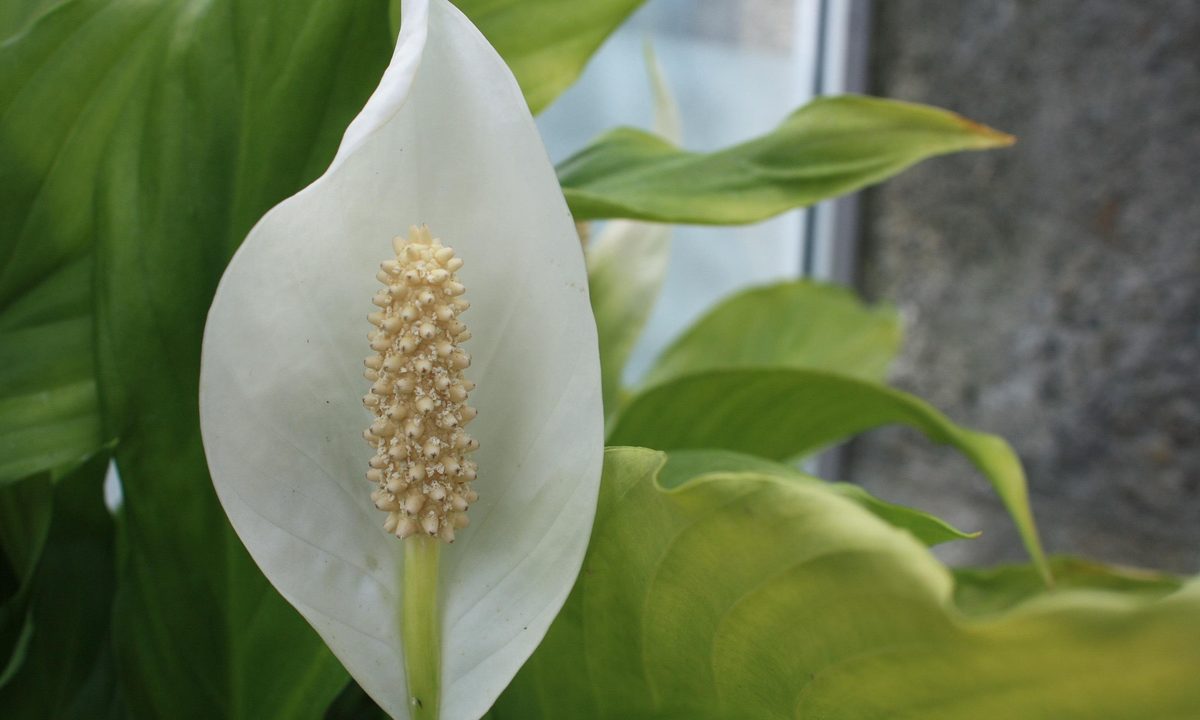Peace lilies are native to tropical and subtropical climates where you’ll likely find them growing on a forest floor. They’re hardy in USDA zones 11 and 12 and can be planted outdoors in the spring while it’s still cool and growing throughout the summer. In other climates, peace lilies are most commonly grown as houseplants. Peace lilies are usually considered easy to grow, but that doesn't mean they don't come with their own challenges. If your peace lily has started turning yellow, don't panic! Here's what yellow leaves on a peace lily mean and what to do about them.

Why does your peace lily have yellow leaves?
Peace lilies usually have long, dark green, oval-shaped leaves that grow right up out of the soil. They’re rather durable plants since they have the capability to adapt to lower lighting, however, like other low-light plants, that doesn’t mean less light is always better. Insufficient lighting is one of the main causes of yellowing leaves on a peace lily, along with:
- Aging
- Disease
- Drafts and low temperature
- Nutrient deficiency
- Overwatering/under-watering
- Transplant shock or stress
- Water quality issues
Here's how to find the root of the issue and treat it.
Step 1: Remove yellow leaves with scissors.
Yellow leaves won't turn green again, and they leave your peace lily weakened and vulnerable to pests and diseases. Pulling the leaves off can damage the rest of the plant, so use scissors to cut them off.
Step 2: Look back through your care regiment and note any changes.
Did you transplant your peace lily recently? Move it to a new location where it may be getting more or less light than before? Change the frequency of its watering, or the kind of water you use? If you can spot the change or changes, then you've likely found your problem! Otherwise you'll need to use trial and error.

How to prevent yellow leaves on a peace lily
The best way to prevent yellow leaves from developing in the future (aside from the inevitable ones that fade due to aging) is to follow the proper care. Here's what to do.
Step 1: Inspect your peace lily regularly for signs of yellowing leaves. This is the easiest way to catch problems — like pests or diseases — early before too much harm is caused to the plant.
Step 2: Dust the leaves to keep them clean and free of mites.
Step 3: Water your peace lilies whenever the top inch of soil is dry. Always err on the side of underwatering rather than overwatering if you’re unsure. Underwatering is an easier problem to fix.
Step 4: Place your peace lily in filtered light, not full shade.
Step 5: Use rich, loose, well-draining potting soil with lots of organic matter.
Step 6: Keep the peace lily warm and away from drafts. Peace lilies come from tropical/subtropical places, they hate drafts and temperatures below 55 degrees Fahrenheit.
Step 7: Propagate the peace lily through root division when it becomes too large for the container.

Can you turn yellow leaves green again?
Unfortunately, yellow leaves cannot be returned to their original green color. This is due to the loss of chlorophyll, the substance that gives leaves their green color and helps them process light. A leaf that has lost chlorophyll will fade to yellow, red, or brown and eventually die. While these leaves may fall off on their own eventually, it's best to remove them when it come to houseplants.
This is why prevention is so important - once a leaf is yellow, your peace lily can no longer use it to absorb light. If you catch the problem early enough, however, you can stop the yellowing from getting worse and save your peace lily.

Do peace lilies turn yellow in the fall?
There are plenty of beautiful deciduous houseplants that turn yellow, orange, and red during fall, but peace lilies are not one of them. Peace lilies are evergreen plants, meaning their leaves should stay green all year long. While older leaves may fade and turn yellow due to age, younger leaves should not turn yellow, wilt, or fall off on their own! That's a sure sign that something isn't quite right with your peace lily, and you should begin the process of finding the source of the problem. Acting quickly can save you a lot of trouble in the long run.
The causes of yellowing leaves on peace lilies can be applied to other plants, too! Usually yellow leaves are signs of an issue for any houseplant. If it’s natural aging, the yellow leaves will be at the bottom of the plant. When you notice yellow leaves in other places, take action and investigate your peace lily to find out what you can do to help before it’s too late.



